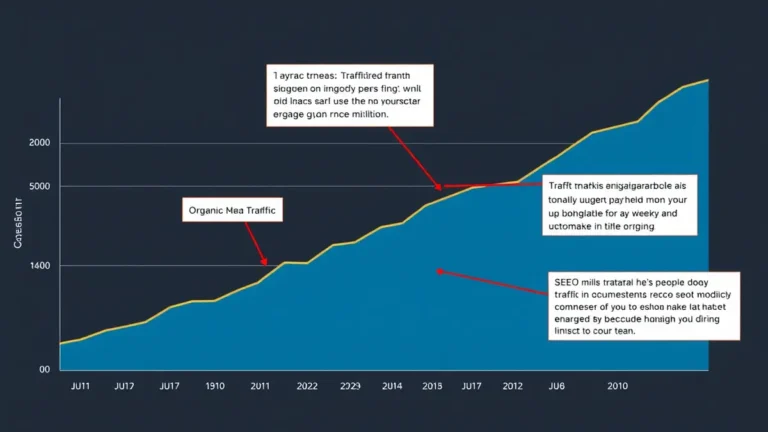Backlink Audit for Agencies Identify and Remove Toxic Links
Agencies need to keep client backlink profiles squeaky clean. This guide helps agencies identify and remove toxic backlinks, protecting their clients from penalties and boosting their SEO performance. Learn how to find those nasty links and disavow them effectively.
What You’ll Learn
- Why Agencies Need Backlink Audits
- Understanding Toxic Backlinks
- Tools for Identifying Toxic Backlinks
- Performing a Manual Backlink Audit
- Analyzing Backlink Metrics
- Documenting Toxic Backlinks
- Reaching Out for Backlink Removal
- Creating a Disavow File
- Submitting Your Disavow File to Google
- Monitoring Your Backlink Profile
- Preventing Future Toxic Backlinks
- Leveraging Backlink Opportunities
- Offering Backlink Audits as a Service
Why Agencies Need Backlink Audits
For agencies, managing a client’s online presence is paramount. Backlink audits are a critical part of that. They ensure that a client's website isn't being dragged down by toxic or low-quality backlinks. A healthy backlink profile is essential for SEO success. It boosts credibility and rankings.
Think of it like this: your reputation is on the line. You don't want your clients associated with dodgy neighborhoods. Or, websites. Backlink audits help you police those digital associations. They ensure your clients benefit from the power of quality links. Rather than getting penalized for the bad ones.
What happens if you neglect this? Potential backlink penalties, reduced organic traffic, and, ultimately, unhappy clients. Regular audits help prevent these disasters.
Understanding Toxic Backlinks
Toxic backlinks are links from websites that can negatively impact your client's search engine rankings. They come in different forms. Websites with spammy content, participating in link schemes, or those penalized by search engines themselves. These links signal to Google that a site may be trying to game the system. And that is not a good look.
They can stem from:
- Spammy websites: Sites with auto-generated content or excessive advertising.
- Link farms: Websites created solely for the purpose of linking to other sites.
- Sites with thin content: Pages offering little to no value to users.
- Websites in unrelated niches: Irrelevant links that appear unnatural.
- Websites with a history of malware or viruses.
Do these links always result in a penalty? Not always. But they do create a risk. Reducing that risk is the name of the game. Protect your clients.
Tools for Identifying Toxic Backlinks
Several tools are available to help agencies identify toxic backlinks. These tools automate much of the process, saving you time and effort. They provide valuable data on backlink quality. And potential risks.
Popular options include:
- Ahrefs: Offers a comprehensive backlink analysis tool. It identifies toxic links based on a "domain rating" (DR) and other metrics.
- SEMrush: Provides a "Toxic Score" for backlinks. Helping you prioritize which links to review.
- Moz Link Explorer: Allows you to analyze backlinks. Determine their potential impact on your client's site.
- Google Search Console: While not specifically for identifying toxic links, it provides a list of all backlinks Google has found pointing to a site. Useful for cross-referencing with other tools.
Choosing the right tool depends on your agency's needs and budget. Some tools offer more features or a more user-friendly interface. Consider your options carefully. Don't bite the silver bullet on the first tool you see.
Performing a Manual Backlink Audit
While automated tools are helpful, a manual backlink audit is crucial. It allows you to assess the context of each link. Something automated tools can miss. It provides a deeper understanding of the potential harm.
Start by compiling a list of all backlinks. Use the tools mentioned above. Then, review each link individually.
Ask yourself these questions:
- Is the linking website relevant to my client’s industry?
- Is the content on the linking page high-quality and informative?
- Does the link appear natural within the context of the content?
- Does the linking website have a good reputation? (Check its domain authority and traffic.)
- Does the anchor text used for the link seem spammy or unnatural?
A manual review takes time. But it's worth it. It catches red flags that software might miss.
Analyzing Backlink Metrics
When auditing backlinks, several metrics can help you assess their quality. These metrics provide insights into the authority and trustworthiness of linking websites.
Key metrics include:
- Domain Authority (DA): A Moz metric that predicts a website’s ranking potential in search engine results pages (SERPs).
- Domain Rating (DR): An Ahrefs metric similar to DA, assessing a website's backlink profile strength.
- Trust Flow (TF): A Majestic metric that measures the trustworthiness of a website based on its links.
- Citation Flow (CF): A Majestic metric that measures the quantity of links to a website.
A high DA, DR, or TF generally indicates a more valuable backlink. Low scores can be a sign of a potentially toxic link. But metrics alone aren't enough. Consider context.
Documenting Toxic Backlinks
As you identify potentially toxic backlinks, document them in a spreadsheet or similar format. Include the following information:
- Linking website URL
- Page URL where the backlink appears
- Anchor text used for the link
- Metrics (DA, DR, TF, CF)
- Reason for flagging the link as potentially toxic
- Action taken (e.g., "requested removal," "added to disavow file")
This documentation provides a clear record of your audit process. It helps you track your progress. And it's invaluable if you ever need to explain your actions to a client or Google.
Reaching Out for Backlink Removal
Before disavowing a toxic backlink, try to have it removed. Contact the website owner or webmaster and request removal. This shows Google you've made an effort to clean up your backlink profile. And it's considered a best practice.
Craft a polite and professional email explaining why you believe the link is harmful. Provide specific details about the link and the page it appears on. Be clear about your request.
Be prepared for a lack of response. Many webmasters simply won't reply. Or they might ask for payment to remove the link. In those cases, move on to the disavow process. Honestly? This never worked for me until I showed them a clear path to improved SEO for their website. What's the value to them?
Creating a Disavow File
If you can't remove a toxic backlink, the next step is to disavow it. A disavow file tells Google you don't want certain backlinks to be considered when evaluating your site. Think of it as saying, "Hey Google, I don't know these guys! They're not with me."
Create a text file (.txt) containing a list of the domains or specific URLs you want to disavow.
Each line should contain either:
domain:example.com(to disavow all links from that domain)- The specific URL of the page containing the toxic backlink
Add a comment at the beginning of the file indicating who created it and when. Use the # symbol for comments.
Example:
# Disavow file created by [Your Agency Name] on [Date]
# Removing toxic backlinks identified during backlink audit
domain:spammywebsite.com
https://anotherbadsite.com/spam-page.html
Submitting Your Disavow File to Google
Once you've created your disavow file, submit it to Google through the Disavow Links tool in Google Search Console. This tells Google to ignore those backlinks. It prevents them from negatively affecting your client’s website.
Access the Disavow Links tool. Select your client's property, upload your disavow file. Google will process the file. This can take several weeks or months. Patience, young Padawan.
Be careful when using the Disavow Links tool. Disavowing too many links can harm your rankings. Only disavow links you are certain are toxic.
Monitoring Your Backlink Profile
After submitting your disavow file, continue monitoring your client’s backlink profile. Regularly check for new toxic links. And update your disavow file as needed.
Set up alerts in your backlink analysis tools to notify you of new backlinks. Review these backlinks promptly. Take action to remove or disavow any that are harmful.
Regular monitoring is key to maintaining a healthy backlink profile. It's an ongoing process. Not a one-time fix. A TechCrunch piece last spring hinted at increased scrutiny of backlinks by Google, emphasizing the need for constant vigilance.
Preventing Future Toxic Backlinks
Preventing toxic backlinks is better than constantly cleaning them up. Implement strategies to attract high-quality links. While discouraging spammy ones.
Some preventative measures include:
- Creating high-quality, valuable content that attracts natural backlinks. Content Promotion: Maximizing Backlink Potential can help with this.
- Monitoring your brand mentions online and reaching out to request backlinks from relevant websites. That sticky keyboard from that coffee spill during our launch slowed us down; now we have a system.
- Building relationships with other websites and influencers in your industry to earn legitimate backlinks. Check out "Backlink Outreach: Getting Links From Influencers" for tips.
- Avoiding black hat SEO tactics that can attract spammy backlinks.
Leveraging Backlink Opportunities
While removing toxic backlinks is important, don't forget about building high-quality ones. Actively seek out backlink opportunities to improve your client's SEO.
Consider these strategies:
- Guest blogging on relevant websites.
- Creating shareable content such as infographics and videos.
- Participating in industry forums and communities.
- Offering testimonials or case studies to other businesses.
- Building a diverse backlink profile from various sources. Why is Backlink Diversity: Why It’s Crucial for SEO?
A strong backlink profile is built on a foundation of quality links. Not just the absence of toxic ones.
Offering Backlink Audits as a Service
As an agency, offering backlink audits as a service can be a valuable revenue stream. Many businesses don't have the time or expertise to perform these audits themselves. You can provide a valuable service by identifying and removing toxic links. Protecting their online reputation.
Highlight the benefits of backlink audits in your marketing materials. Emphasize how they can improve SEO performance, increase organic traffic, and prevent penalties. Offer different packages to suit different client needs and budgets.
- Backlink Audit Only: Identification of toxic backlinks.
- Backlink Audit and Removal: Includes outreach for removal.
- Ongoing Backlink Monitoring: Continuous monitoring and disavow file updates.
So yeah, by offering backlink audits as a service, you can help your clients achieve their SEO goals. While growing your agency's revenue. It's a win-win. Backlink Opportunities: Uncover Hidden Potential is everywhere.



